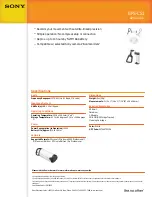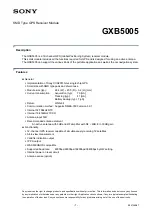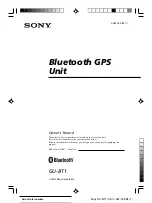
DGPS Interface
The last two format settings allow the unit to accept
RTCM DGPS corrections in RTCM 104 version 2.0 for-
mat. Using DGPS corrections will improve receiver accu-
racy to 5-10 meters, regardless of errors induced by the
government’s Selective Availability (SA) program. The
RTCM/NONE format will allow connection to any man-
ually-tuned beacon receiver by using the proper output
interface. The baud rate is selectable from the unit.
The RTCM/NMEA selection controls the GARMIN
GBR-21 differential beacon receiver. Once a RTCM set-
ting has been selected, the unit will either automatically
try to tune the last frequency and bit rate you selected or
will switch to the default frequency of 304.0 kHz with a
bit rate of 100 bps if no previous beacon has been tuned.
You may also enter your own frequency and bit rate.
To enter a DGPS beacon frequency:
1. Highlight the ‘FREQ’ field , and press
E
.
2. Enter the desired frequency, and press
E
.
3. Highlight the ‘RATE’ field , and press
E
.
4. Select the desired transmission rate, and press
E
.
When the GPSCOM 170 is receiving DGPS correc-
tions from the GBR-21, the ‘beacon receiver’ section of
the I/O setup page will display the beacon frequency and
signal strength, as well as the distance from the transmit-
ter to the beacon receiver. At the bottom of the beacon
receiver field, a status message will keep you informed of
DGPS activity:
• A ‘tuning’ message will be displayed while a beacon
signal is being tuned.
• Once the beacon signal has been tuned, a ‘receiving’
message will be displayed.
• If a beacon signal is tuned and no corrections are
being received, a ‘no data’ message will be dis-
played.
• If a beacon signal cannot be tuned, a ‘no status’
message will be displayed.
The unit will also display one of three alert messages
concerning DGPS operation through the message page:
DGPS Interface
Reference
62
DGPS Interface
Once a RTCM option is
selected, you must manually
tune the beacon receiver
from the frequency field.
The message page will alert
you to any problems relat-
ing to DGPS operation. You
may also monitor the DGPS
status from the status field
on the interface setup page.
170 manual pages rev D 9/21/98 9:23 AM Page 62
















































